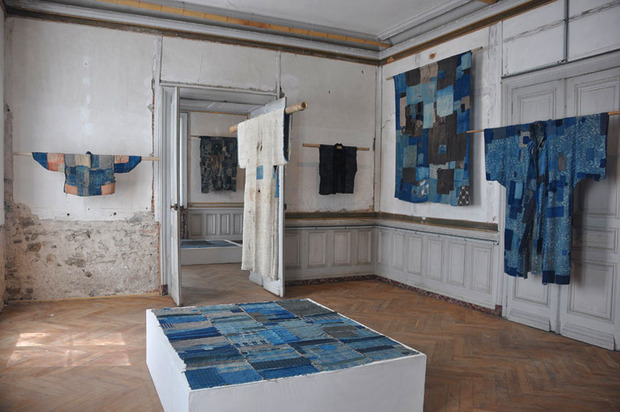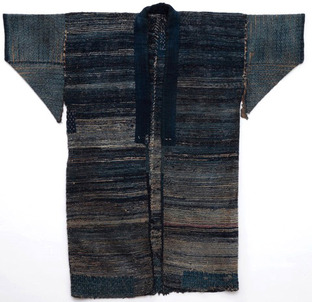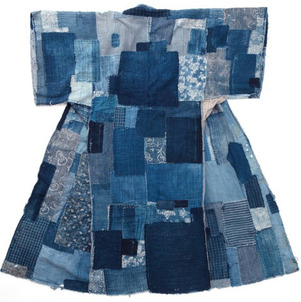Boro—The Fabric of Life
Domaine de Boisbuchet hosts an exhibition of rare household textiles made by 19th and 20th century Japanese peasants


Around a month ago I had the privilege of visiting Sri, a private gallery owned by Stephen Szczepanek that houses an incredible archive of rare vintage Japanese textiles. While the experience was educational and fascinating, it did little to curb my appetite for fine Japanese fabrics. With this in mind, it was exciting to see the announcement for “Boro—The Fabric of Life,” a new exhibition co-curated by Szczepanek, featuring a good deal of his original collection. Currently on show at Domaine de Boisbuchet, in Charente, France, the historically significant exhibition centers on the scavenger-style patchwork technique known as Boro and features some 50 pieces of kimonos, futon covers, work garments and other textiles handmade between 1850 and 1950 by Japanese peasants.


As learned at Sri, the traditional patchwork style of Boro largely developed out of necessity rather than as a fashion statement. It wasn’t until well into the 20th century that cotton became widely available in most of Japan. And while availability grew, it remained too expensive for most poor rural workers, ultimately leading to the widespread use of patchwork manufacturing and the tradition of passing repeatedly mended garments down from generation to generation. Beautiful examples of this longstanding tradition can be seen in the show, hung from the ceiling like flags of a proud nation.


The Boro textiles offer an insight into the modest lives of those who wore them, as well as the principals of the country in which they lived. The principal of “wabi-sabi” can be seen in the perfection of imperfection, “shibui” in the textiles’ humble nature and “mottainai” as a reflection of a societal effort to avoid waste. As technology evolved and cotton before more accessible, popularity of the Boro process faded, however Boro—The Fabric of Life is quick to note its significance to and impact on contemporary culture haven’t been lost.

In addition to the sizable collection provided by Szczepanek, a group of similarly styled textiles from Bangladesh are included in the exhibition. Those garments have been recycled and repurposed by a cooperative of former Bangladeshi textile factory workers supported by German architect—and Boisbuchet workshop leader—Anna Heringer. Visit Boisbuchet for more details. Boro—The Fabric of Life is on show through 15 September.
Images courtesy of Domaine de Boisbuchet












